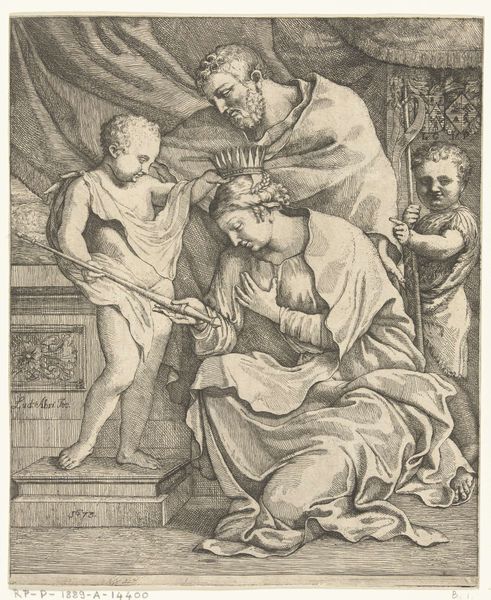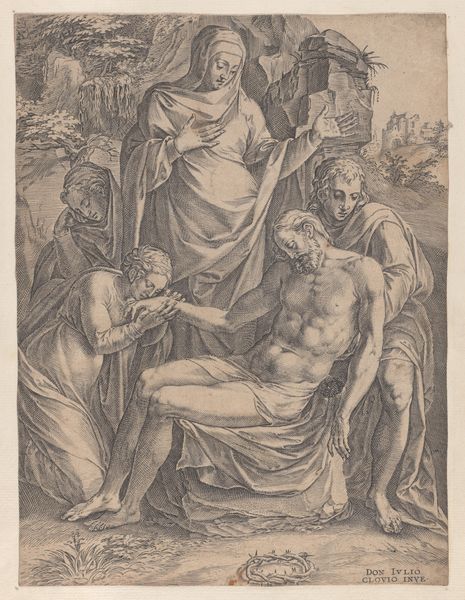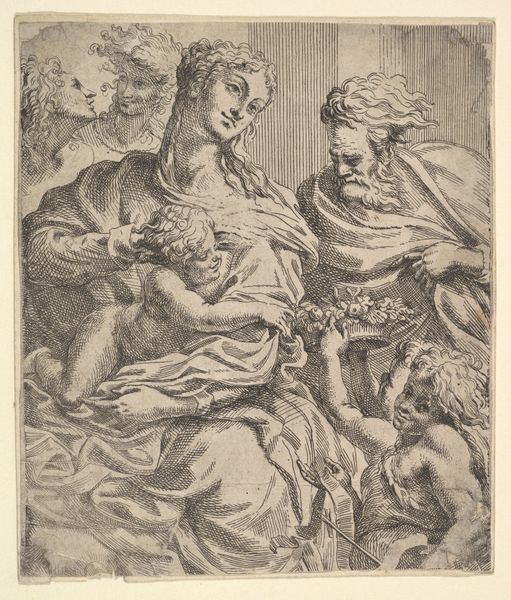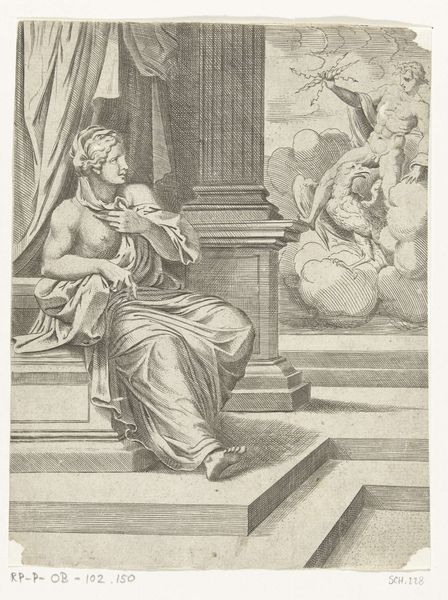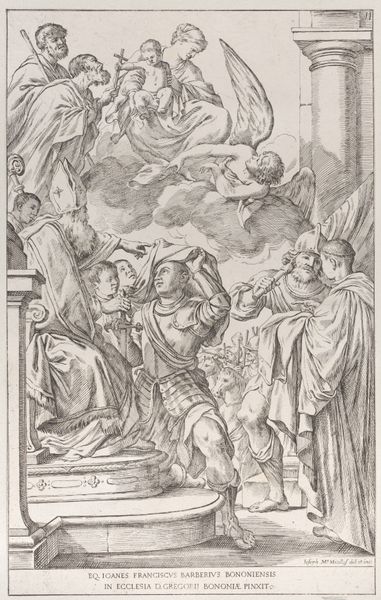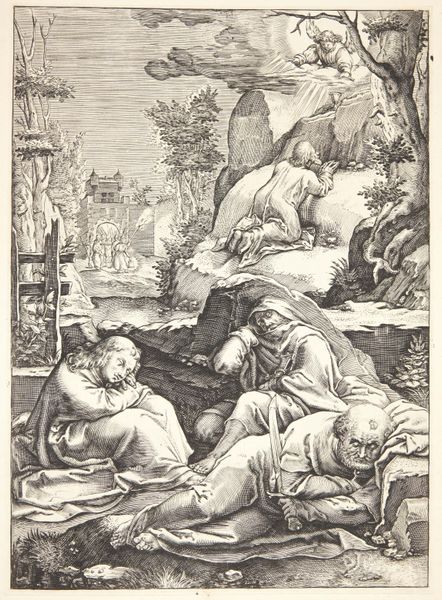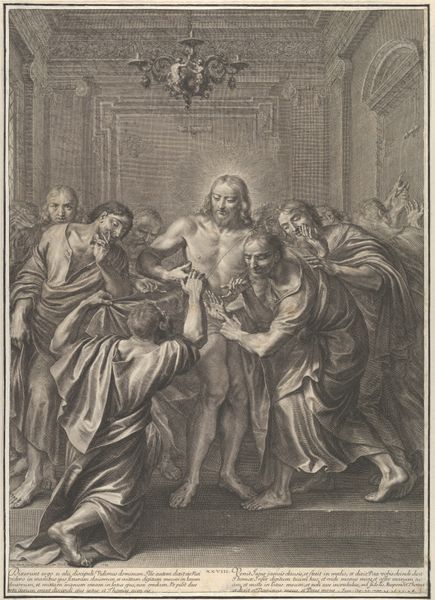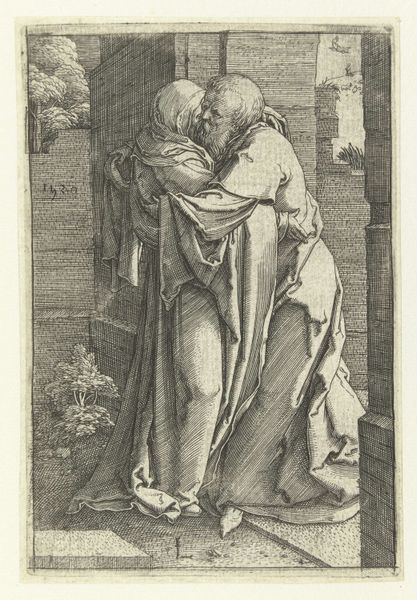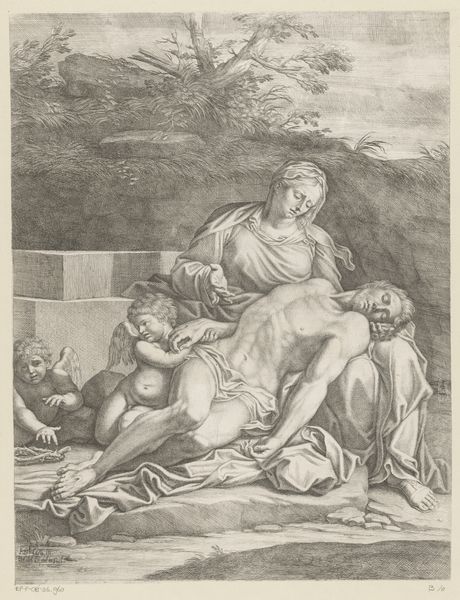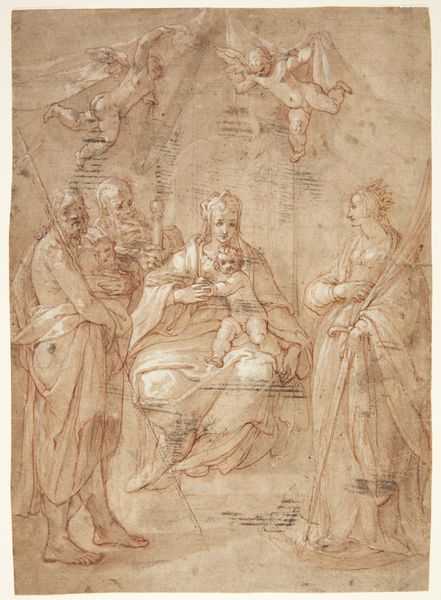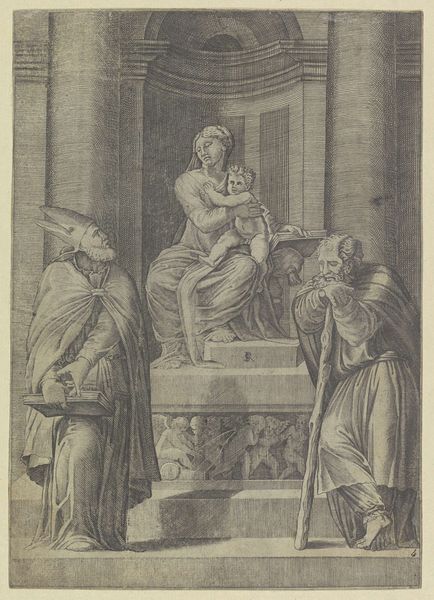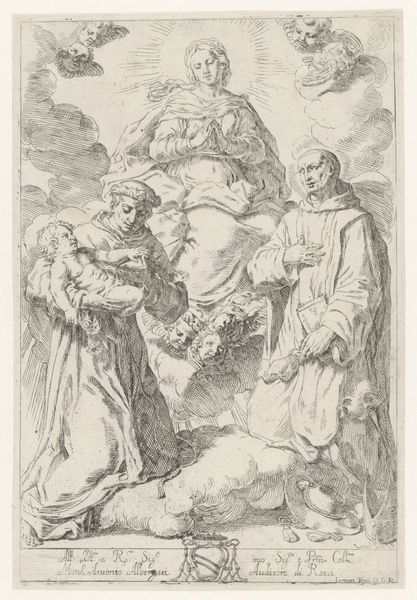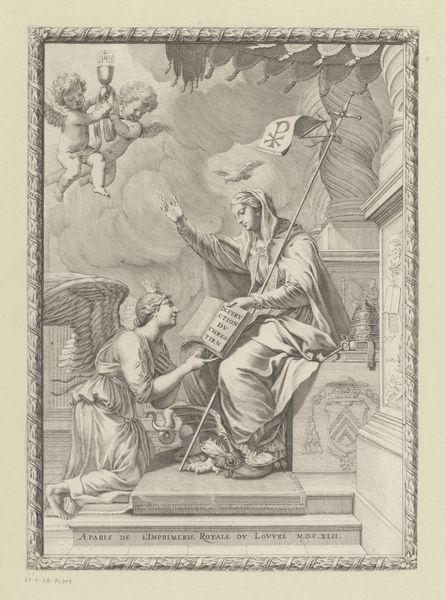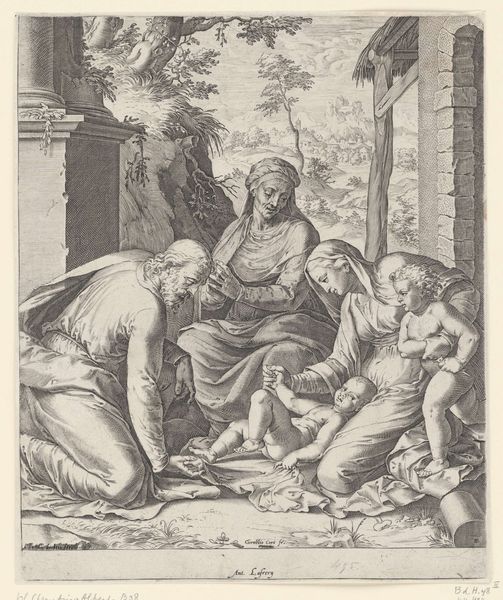
Landschaft mit einem mit Weiden bewachsenem Fluß, über welchen eine Brücke mit drei Bogen führt, vorne Reiter und Fußgänger
0:00
0:00
drawing, paper, chalk
#
drawing
#
narrative-art
#
baroque
#
landscape
#
figuration
#
paper
#
chalk
#
14_17th-century
#
history-painting
Copyright: Public Domain
Curator: Here we have a 17th-century chalk drawing entitled "Landscape with a willow-grown river, across which leads a bridge with three arches, in front riders and pedestrians" by Adam Pynacker, housed here at the Städel Museum. Editor: Immediately, I'm struck by the calm, pastoral mood evoked by the sepia tones, and the incredible lightness of the draughtsmanship. It feels expansive and quietly observed. Curator: Pynacker was a master of light and composition. Note how the three arches of the bridge function not just as structural elements, but as visual anchors that rhythmically guide our eyes through the landscape. It demonstrates an understanding of depth through careful use of perspective, and his facility with line gives form to atmospheric subtleties. Editor: The placement of riders and pedestrians brings forth thoughts about social interactions and class, doesn't it? Are they presented merely as formal elements or do they suggest a hierarchical organization of landscape and its users? Curator: An interesting consideration! I’d argue that in many respects, figures serve mainly to animate the overall design and suggest scale, though Baroque landscapes were rarely devoid of implicit cultural and social messaging. Editor: The figures could serve that, however the rendering itself emphasizes serenity. How does the very emptiness—relative of course—become charged? With fewer human figures it directs our thought toward our own individual place in that land—or to ask who does that land belong to and how is that controlled? Curator: Absolutely. While it's indeed rich for critical thought, the execution here feels so masterful. The layered approach to light and shade in the rendering of the water and the trees gives us depth without the weight of heavy shading. Editor: I see how formal excellence aligns with thematic undertones. Pynacker lets us think and charges the moment. Thank you! Curator: My pleasure! His manipulation of perspective allows the gaze to transcend what it means to simply reproduce, instead inviting the spectator on their own cognitive journey.
Comments
No comments
Be the first to comment and join the conversation on the ultimate creative platform.
